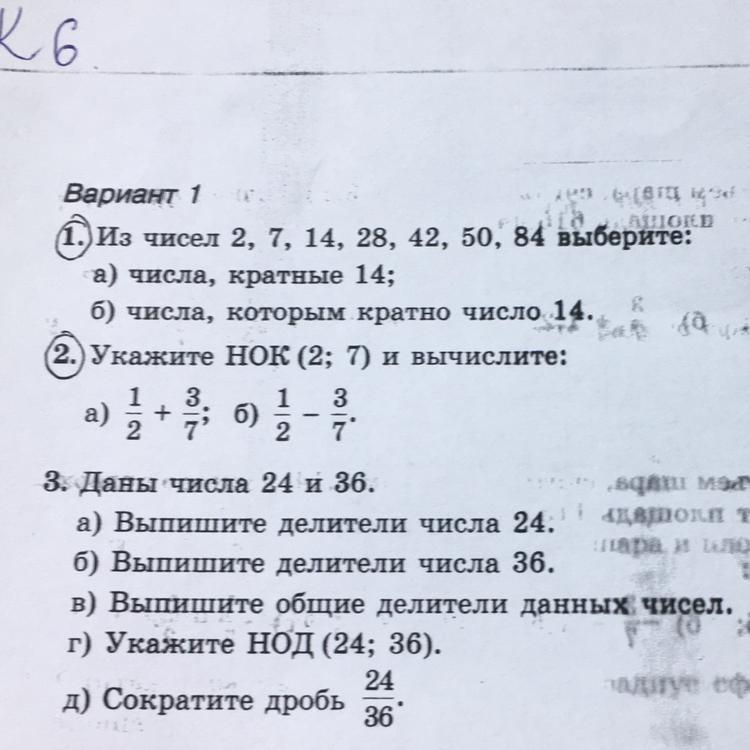Предмет: Математика,
автор: shulyakovskyvova
Помогите пожалуйста
Приложения:

Ответы
Автор ответа:
1
Ответ:
Пошаговое объяснение:
1.
а) кратные 14(т.е делятся на 14) 14;28;42;84
б))2 и 7
2.
НОК(2;7)=14
а) 1\2 + 3\7= (1*7)\(2*7) + (3*2)\(7*2)= 7\14 + 6\14= 13\14
б) 1\2 - 3\7 = (1*7)\(2*7) - (3*2)\(7*2)= 7\14 - 6\14= 1\14
3.
а) 24- 1;2;3;4;6;8;12;24
б) 36- 1;2;3;4;6;9;12;18;36
в)общие -1;2;3;4;6;12;
г) НОД(24;36)=12
д) 24\36= 2\3
Похожие вопросы
Предмет: Русский язык,
автор: maximbol2003
Предмет: Другие предметы,
автор: zara3080
Предмет: Русский язык,
автор: ольга1161
Предмет: Английский язык,
автор: 7777шш